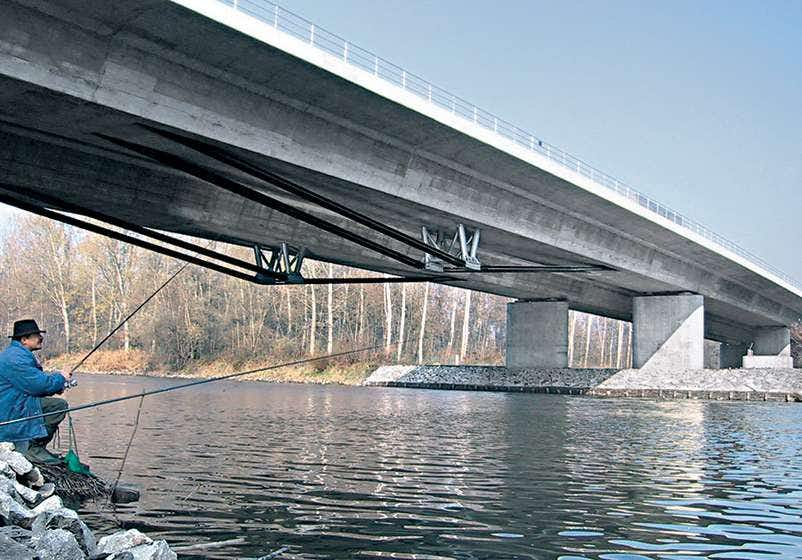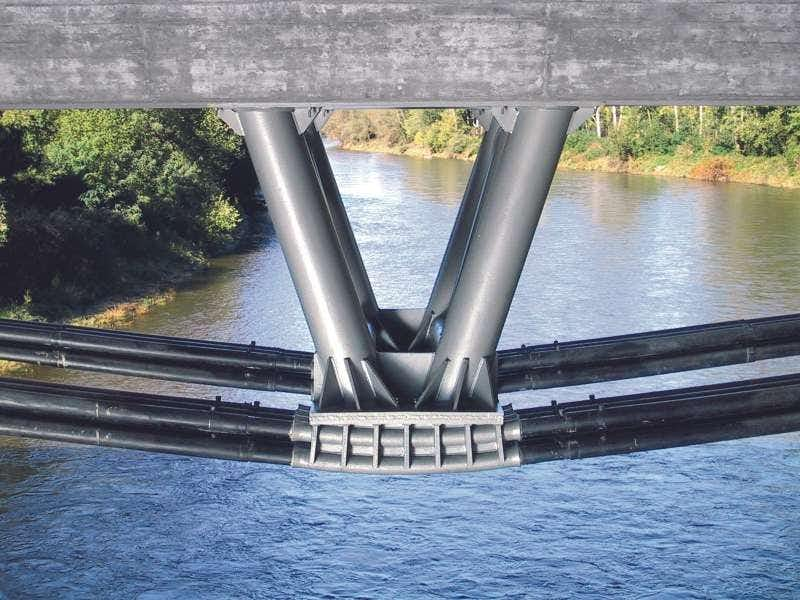New Stressing Technologies used for the Construction of the Mura Bridge
The highway construction between the cities of Maribor and Lendava includes the construction of a new bridge. The 833m long and 28m wide Mura bridge, which consists of two single-cell box girders, is the longest bridge structure across a river in the Slovenian Republic.
Context
The central spans across the river are 50+80+50 m, and the side spans are 40m long. The bridge decks were built using the incremental launching method - a remarkable performance considering the fact that the bridge is extremely long.
The bridge is built on a total of 38 piers with heights from 7.0m to 8.5m. All piers are exclusively located in the flood area and not in the river itself. The bridge architecture called for the use of various stressing methods: on the one hand, classic post-tensioning in the concrete cross section and, on the other hand, tensioning of external tendons in grouted HDPE pipes (type MC) and external monostrand tendons in HDPE pipes (type W).

Solution
To reduce tensions and deformations due to the dead load of the bridge, external tendons were used which were placed both in the hollow box girder and underneath the superstructure via a 2.40m saddle. Together with the external tendons, the saddle constitutes an elastic truss for the continuous central part of the bridge.
The unique design of the Mura Bridge was achieved through the use of new construction methods. Although there were some cases in which tendons had been used as trusses in bridge construction, those solutions could not be directly used for the construction of this structure. As a result, exact analysis and planning during all construction phases was absolutely necessary.
After 3 years of construction the project was successfully completed in October 2003.





